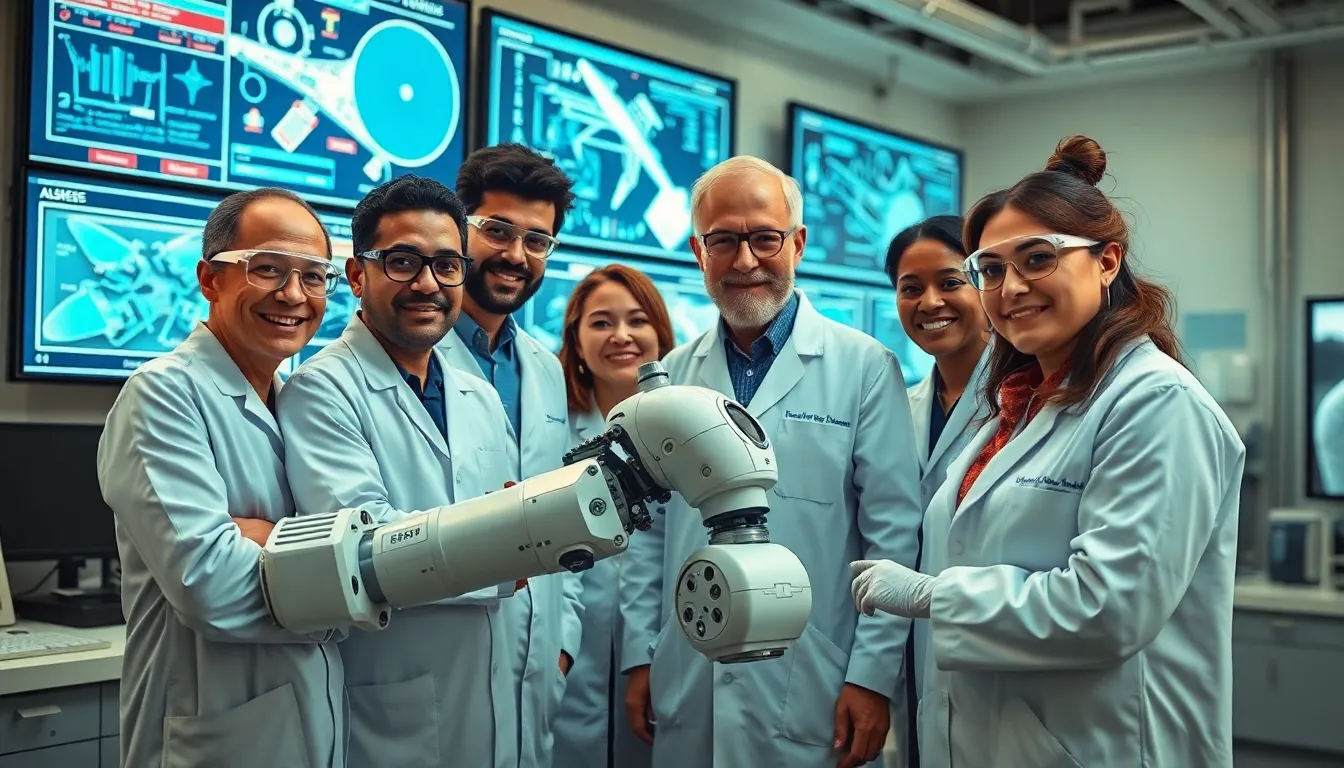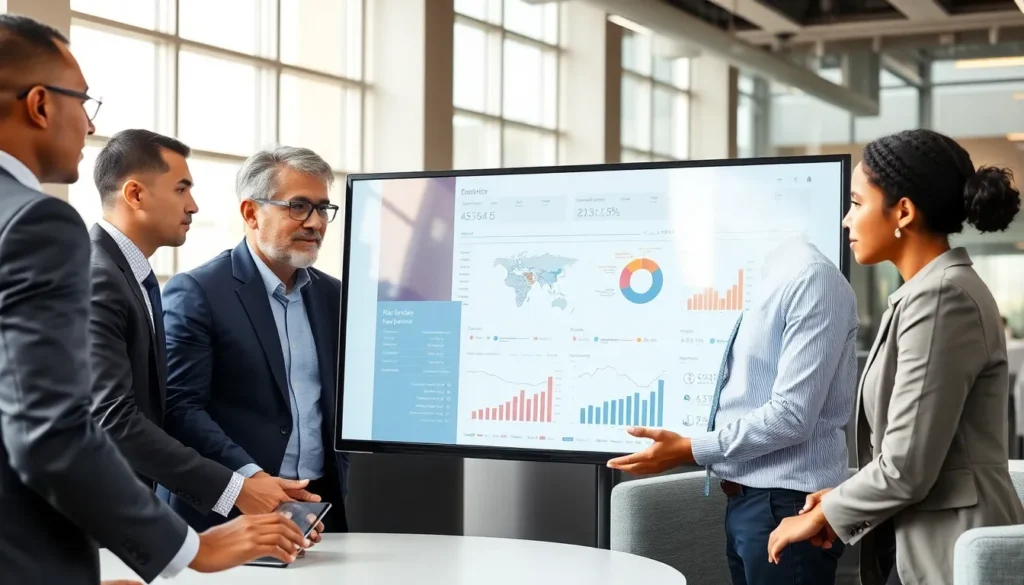When it comes to exploring the cosmos, the Space Technology Mission Directorate (STMD) is the ultimate cosmic co-pilot. Imagine a team of brilliant minds working tirelessly to develop cutting-edge technologies that could one day help humanity take a giant leap onto Mars—or at least ensure our snacks stay fresh during long space flights.
Table of Contents
ToggleOverview of Space Technology Mission Directorate
The Space Technology Mission Directorate (STMD) plays a critical role in advancing space exploration. This directorate focuses on developing innovative technologies that support NASA’s missions. Human missions to Mars benefit significantly from STMD’s efforts. Specifically, the team researches life support systems to preserve food during long-duration space travel.
Key areas of focus include aeronautics technologies, robotics, and in-space manufacturing. Each effort contributes directly to overcoming challenges faced in deep space missions. Investments in these technologies enable more efficient exploration and sustainable human presence beyond Earth.
Collaboration with industry partners amplifies STMD’s capabilities. By fostering public-private partnerships, the directorate drives innovation and accelerates technology development. This synergy leads to practical applications that extend beyond space missions, enhancing capabilities on Earth.
Additionally, STMD oversees numerous projects aimed at improving safety and reliability. For instance, advancements in spacecraft communication systems contribute to seamless operations during missions. Such technologies ensure astronauts receive vital information in real-time.
Funding for new initiatives supports a wide range of projects, from early-stage research to advanced prototypes. Several current projects focus on space habitats and advanced propulsion systems. STMD’s commitment to transforming concepts into tangible technologies aids in achieving long-term goals.
Overall, the Space Technology Mission Directorate serves as a cornerstone of NASA’s exploration strategy. By prioritizing technological advancements, STMD positions itself at the forefront of the future of space exploration.
Key Objectives

The Space Technology Mission Directorate (STMD) aims to drive innovations crucial for future space endeavors. This focus aligns with the overarching goals of NASA in exploring and utilizing space resources.
Advancements in Space Technology
STMD emphasizes major advancements in several areas, including robotics, aeronautics, and in-space manufacturing. Innovative robotics enhance the efficiency of space operations by automating complex tasks. Advanced aeronautics technologies improve the safety and resilience of aircraft operating in extreme environments. In-space manufacturing capabilities enable the creation of essential components directly in space, reducing reliance on Earth supplies. Each breakthrough supports missions by addressing the unique challenges of deep space travel.
Supporting NASA’s Vision
STMD plays a critical role in advancing NASA’s vision for exploration. This directorate collaborates closely with industry partners, fostering public-private partnerships that accelerate technology development. Enhanced spacecraft communications improve the reliability of mission-critical systems, ensuring safety throughout missions. Projects focusing on sustainable space habitats pave the way for longer human presence in space. By targeting these specific areas, STMD contributes significantly to NASA’s strategy and the future of space exploration.
Major Programs and Initiatives
Space Technology Mission Directorate (STMD) engages in various programs and initiatives that enhance space exploration capabilities. These efforts include technology demonstration missions and strategic partnerships.
Technology Demonstration Missions
Technology demonstration missions test innovative solutions in real space environments. These missions validate new technologies before their integration into larger projects. For example, the Commercial Lunar Payload Services (CLPS) program aims to deliver payloads to the Moon’s surface. Such missions address significant risks associated with lunar exploration. They also provide critical data that informs future missions to Mars and beyond. STMD focuses on developing essential technologies for sustainable human presence in deep space.
Partnerships and Collaborations
Partnerships and collaborations play a vital role in STMD’s success. Engaging with industry partners fuels innovation and accelerates the development of emerging technologies. Public-private partnerships allow for resource sharing and cost-effective solutions. For instance, collaborations with companies in propulsion systems and in-space manufacturing foster advancements that benefit both space missions and Earth applications. STMD also collaborates with academia, enhancing research initiatives through shared knowledge and expertise. These strategic alliances strengthen NASA’s mission and increase the potential for groundbreaking advancements.
Impact on Future Space Exploration
The Space Technology Mission Directorate (STMD) significantly shapes future space exploration. Innovations in robotics enhance mission efficiency, while advancements in aeronautics improve safety in harsh environments. In-space manufacturing allows critical components to be created directly in space, reducing reliance on Earth-based resources.
Budget allocations provide substantial funding for technology demonstration missions. Current efforts include the Commercial Lunar Payload Services (CLPS) program, which tests new technologies in lunar environments. These missions yield vital data that informs future Mars explorations, addressing potential risks and increasing mission success rates.
Public-private partnerships expand STMD’s reach and capabilities. Collaborations with industry partners generate innovative solutions applicable to both space and terrestrial challenges. These alliances foster the development of emerging technologies that benefit NASA’s broader objectives and enhance overall mission performance.
Research initiatives focus on sustainable space habitats and advanced propulsion systems. These projects aim to develop the necessary infrastructure for long-duration missions. Strategies prioritize innovation that ensures safety and reliability in deep space travel, ultimately supporting human exploration of Mars.
Technological advancements from STMD’s initiatives echo across various sectors. Applications derived from space technology often find practical use on Earth, showcasing the directorate’s broader impact. As challenges in space exploration evolve, STMD remains at the forefront, driving innovation that propels humanity’s next steps beyond our planet.
The Space Technology Mission Directorate plays a pivotal role in shaping the future of space exploration. By focusing on innovative technologies and fostering collaborations with industry partners, it drives advancements that enhance mission efficiency and safety. With ongoing projects aimed at sustainable habitats and propulsion systems, STMD is preparing humanity for long-duration missions beyond Earth.
As challenges in space evolve, the directorate’s commitment to technological innovation ensures that NASA remains at the forefront of exploration. The impact of its initiatives will resonate not only in space but also on Earth, showcasing the importance of investing in space technology for the benefit of all. With STMD leading the charge, the next era of space exploration is poised to be transformative.





